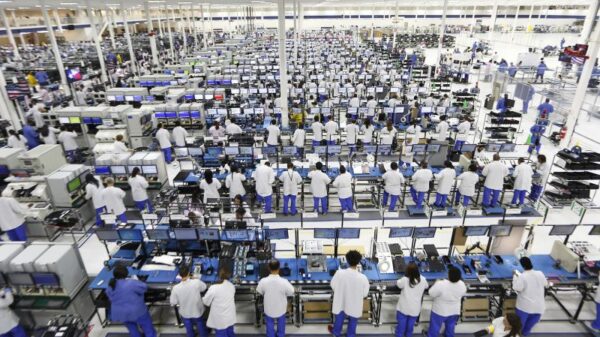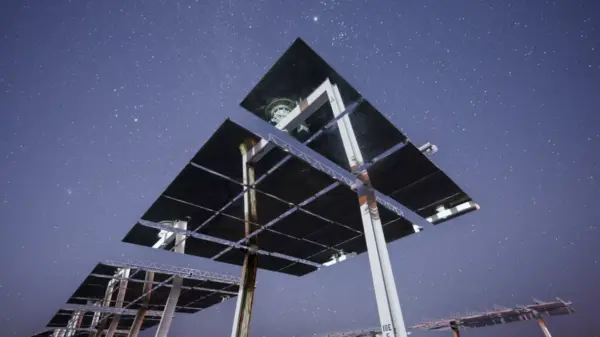As U.S. enterprises increasingly face connectivity challenges, many are turning to Fixed Wireless Access (FWA) as a viable solution. This technology is gaining popularity among organizations seeking reliable cellular connectivity for their digital initiatives. With traditional fiber and cable broadband often unattainable in remote or underserved areas, FWA offers a cost-effective and rapid alternative.
According to industry analyst Larbi Belkhit from ABI Research, all Tier One Mobile Network Operators (MNOs) in the United States, including Verizon, AT&T, and T-Mobile US, recognize the potential of FWA. These operators are developing differentiated offerings as interest in FWA surges, particularly within the Small and Medium Business (SMB) segment. Notably, ABI Research predicts that by the end of the decade, over 50% of global enterprise FWA subscriptions will originate from North America.
Understanding Fixed Wireless Access
Fixed Wireless Access is a method for delivering high-speed Internet connectivity using wireless cellular networks rather than traditional cabling. By leveraging cell towers and radio signals, FWA provides last-mile connectivity without the need for fiber installations. This is especially beneficial for businesses in areas where it is difficult or costly to lay fiber.
One of the main advantages of FWA is its ability to utilize 5G, enhancing speed and reducing latency for bandwidth-intensive applications. Deployments can often be executed quickly—sometimes within hours—allowing businesses to establish connectivity without the long wait associated with fiber installation.
Comparing FWA and Fiber Broadband
FWA stands out primarily because it does not require physical cabling, which can be a significant impediment for organizations situated in challenging locations. While fiber can offer superior throughput and lower latencies, modern FWA solutions are typically capable of supporting a range of enterprise applications effectively.
In situations where temporary connectivity is necessary, FWA provides a more flexible and cost-efficient option compared to fiber broadband, which is generally more suited for long-term deployments that demand high performance.
Organizations are adopting FWA for several reasons. The technology delivers substantial performance gains through 5G, allows for rapid deployment, and comes with strong Service Level Agreements (SLAs) that enhance reliability. This connectivity also supports Software-Defined Wide Area Network (SD-WAN) frameworks, enabling businesses to improve backup Internet options and streamline control.
FWA also contributes to bridging the digital divide, particularly in remote and underserved regions where fiber installation is economically unviable. Its simplified installation process allows Information Technology (IT) teams to deploy solutions in locations such as agriculture and mining, where connectivity is often lacking.
Operational Advantages and Limitations
While FWA offers numerous advantages, it is not without limitations. The technology’s performance can be variable, and its reliance on line-of-sight can restrict coverage. Security and compliance are also critical considerations, particularly in high-demand areas where capacity might be limited.
The flexibility and rapid deployment of FWA make it an attractive option for various use cases, particularly in retail, education, agriculture, and hospitality. For instance, retailers can quickly set up Point of Sale (POS) systems at pop-up locations, while agricultural businesses can deploy IoT devices to monitor crops.
FWA also supports various operational models, particularly as enterprises seek to reduce Capital Expenditure (CAPEX) by shifting to Operational Expenditure (OPEX) approaches. This trend reflects a broader movement toward as-a-Service offerings, providing organizations with the flexibility to adapt in a dynamic economic landscape.
When to Consider Fixed Wireless Access
Enterprises should consider FWA if they are located in underserved areas, lack adequate backhaul connectivity, need quick installations, or require solutions for tracking mobile assets. For example, remote mining operations may lack the necessary infrastructure for traditional broadband, while retailers might face delays in launching new stores due to lengthy fiber installation timelines.
In summary, Fixed Wireless Access provides a compelling alternative for businesses looking to enhance their connectivity. While fiber broadband remains the gold standard for high-performance requirements, FWA’s flexibility, scalability, and cost-effectiveness make it an increasingly attractive option for many enterprises facing connectivity challenges.

































































